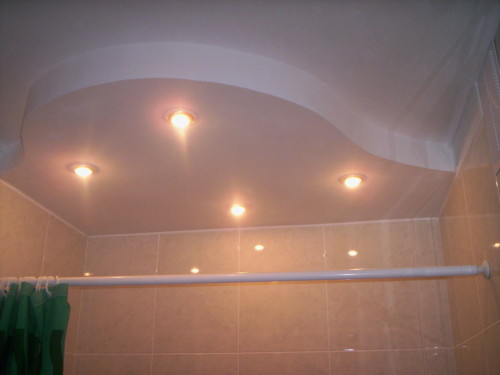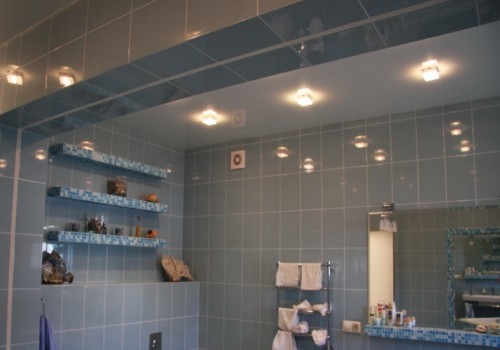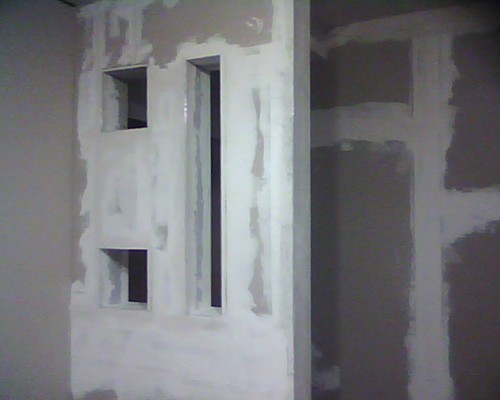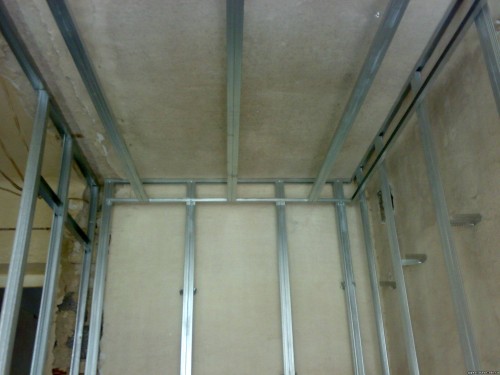
Plasterboard in the bathroom: Selection Rules, Features of Use and Mount Building materials
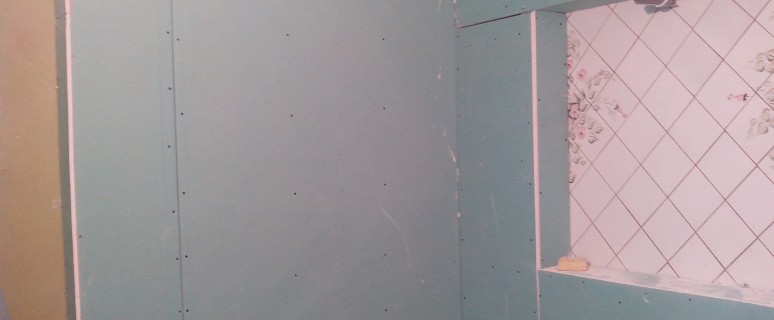
As is known, plasterboard is a universal material that is used in almost all residential and industrial buildings. The low cost and flexibility of the material allows it to be used not only to create smooth walls, but also for the construction of shelves and other decorative housing elements. Many people wish to use drywall to create various building compositions in the bathroom. Unfortunately, under the action of moisture, this material begins to deform, so the usual sheets of drywall in this case are not suitable. Now manufacturers are increasingly producing a special type of material that can easily counteract moisture. Such plasterboard is somewhat more expensive than usual, however, with it, it is much easier to carry out repair work in the bathroom, and the result will be better than expected.
Content
Features of moisture resistant plasterboard
Moisture-resistant plasterboard differs from the usual only by the presence of special additives that successfully repel the small volumes of moisture. However, this is not enough to use this material as the main finish for the walls.
Before such repairs, you need to choose a material that will be on top of the plasterboard. The easiest way to use the paint, which is best applied and dries on the surface of the gypsum material. However, in this case, we need a moisture-repellent paint, otherwise the design of plasterboard can lose its original properties and collapse.
If the paint is applied to the surface of the material, the creation of a metal frame is not required. If there will be a ceramic tile on top of the plasterboard, then without additional attachment it is not necessary. Accordingly, the creation of a frame means that you will have to sacrifice some room space.
Plasterboard sheets can be glued straight to the wall. In this case, it is necessary to be sure that the surface does not have significant irregularities, otherwise the material after some time may just roll apart. If the wall has irregularities and deepening, it is better not to shake and acquire metal components to create a frame. This is to ensure the reliability of the design over long years.
It is also important to know that ventilation should function in the bathroom. Otherwise, high humidity indoors will negatively affect the condition of the plaster material. Even the ventilation that was created with the construction of the house is suitable, but it should work without any problems.
The process of preparing walls to the installation of plasterboard
If the walls of the walls are made without a preliminary framework of the frame, then it is necessary to take care of the walls of the walls. Experts advise to align their surface in such a way that irregularity differences are no more than 5 mm. In case the wall has significant damage, it is necessary to use cement plaster. After alignment, you need to wait for at least a couple of days to make the material drying and the necessary strength.
Wall decoration with plasterboard without creating a frame
The process of decoration of walls by plasterboard is rather simple, and without prior construction of the frame - even easier.
With such a finish, first, you will have to spend some manipulations with the wall surface. It is necessary to cement all the cracks and apply waterproof primer. Such a material should have deep penetration. After the surface of the wall dries, you need to start applying glue on the wall and sheets of drywall. In this case, it will be necessary to impose small portions of glue along the perimeter of the sheet. The layer of the adhesive composition should be no more than 2 cm. When fixing on the sheets of plasterboard, it is necessary to press a little so that the glue is better to hold the material. Also worth paying attention to the surface of the surface. Strong protrusions of sheets are not allowed. If necessary, you can remove part of the material and apply the required layer of glue.
After that, the seams and joints need to be treated with a waterproof putty. It is impossible to miss a millimeter surface, otherwise moisture can significantly deform plasterboard. Next, the wall is painted.
Creating a frame and facing process
As already mentioned, when installing drywall in the bathroom it is best to create a metal frame. With it, on sheets of drywall, you can place a tile or any other facing material. In addition, on the same principle you can create shelves and partitions from plasterboard.
To begin with, as in the past case, it is necessary to make alignment of the walls. The frame must be perfectly smooth. Metal profiles of designs are installed in a step of 30-40 cm. Dowels or screws are used for fastening elements. Previously need to drill holes in the wall.
On top of the frame are attached plasterboard sheets. Unlike the past method of finishing the walls, the material is fixed here with the help of "bedlops" (small screws). After putting the junctions, you need to wait a bit to dry completely dry. Next, you can proceed to finishing the surface with ceramic tiles. In this case, the repair process does not differ from the usual cladding. To increase reliability, you can lay the sheets of plasterboard sheets by a double layer.
Creating a frame has many advantages that will definitely use the bathroom. Under construction you can hide a lot of pipes and wires. In addition, with the help of drywall, building compositions of various forms are created. If you need to create multiple shower, then the gypsum material can be used to erect small partitions.
The larger the bathroom uses drywall, the more seriously it is necessary to refer to waterproofing. It is necessary to regularly ventilate the room, as well as check the health of the ventilation equipment.




